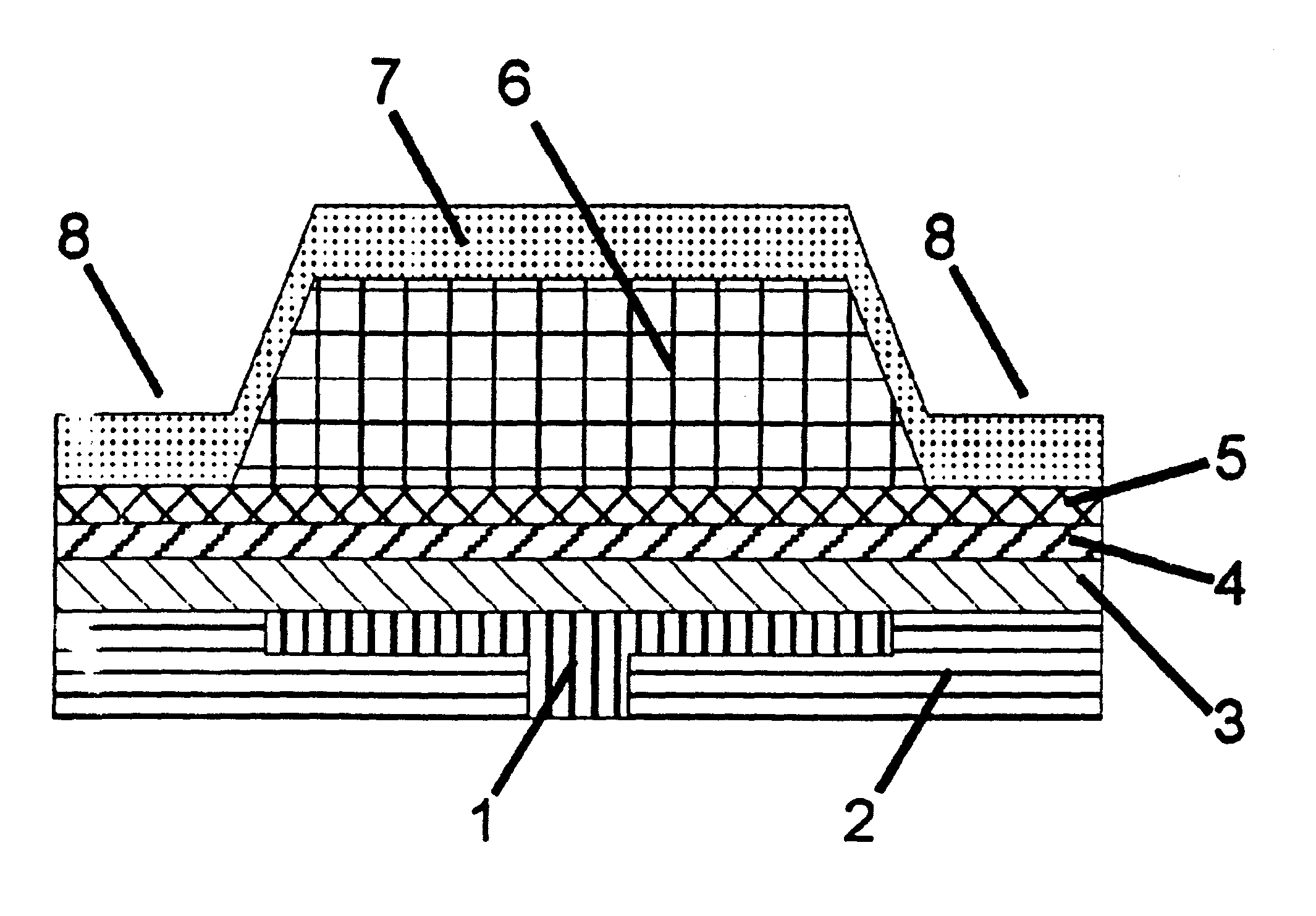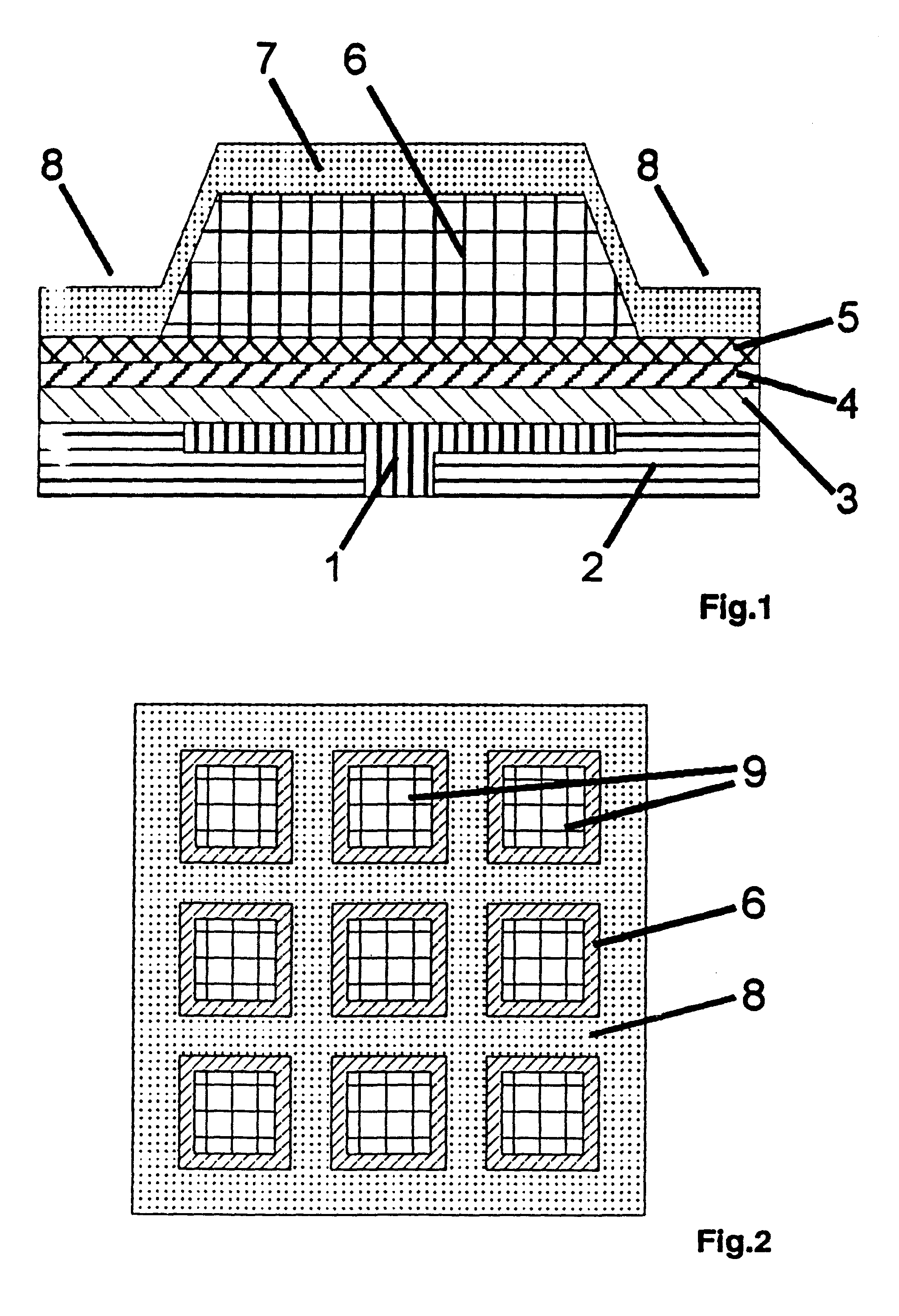Method for producing an organic light emitting device (OLED) and structure produced thereby
a light emitting device and organic technology, applied in the direction of organic semiconductor devices, solid-state devices, thermoelectric devices, etc., can solve the problems of low light transmission efficiency,
- Summary
- Abstract
- Description
- Claims
- Application Information
AI Technical Summary
Benefits of technology
Problems solved by technology
Method used
Image
Examples
Embodiment Construction
[0029] Referring now to the drawings, and more particularly to FIGS. 1-2, there is shown a preferred embodiment of the method and structures according to the present invention.
[0030] FIG. 1 shows an exemplary cross-section of a pixel element of an organic display. The pixel of an organic display is defined by an electrode pad 1 made of metal which acts as the anode.
[0031] The electrode pad 1 is integrated into the surface of the substrate 2 and connected to the integrated driving circuit (not shown). A stack of organic layers 3 are successively deposited on top of the substrate 2 covering also the electrode pad 1 and completed with a 5-nm thin layer 4 of Ca being the cathode and representing the layer of conductive material 4 (e.g., also called "the semi-transparent metal electrode (TME)"). A 20-nm GaN film 5 is deposited to protect the Ca layer 4 from oxidation and the subsequent deposition process of the second protection layer.
[0032] A photoresist 6 is formed (e.g., spun) on the ...
PUM
 Login to View More
Login to View More Abstract
Description
Claims
Application Information
 Login to View More
Login to View More - R&D
- Intellectual Property
- Life Sciences
- Materials
- Tech Scout
- Unparalleled Data Quality
- Higher Quality Content
- 60% Fewer Hallucinations
Browse by: Latest US Patents, China's latest patents, Technical Efficacy Thesaurus, Application Domain, Technology Topic, Popular Technical Reports.
© 2025 PatSnap. All rights reserved.Legal|Privacy policy|Modern Slavery Act Transparency Statement|Sitemap|About US| Contact US: help@patsnap.com


